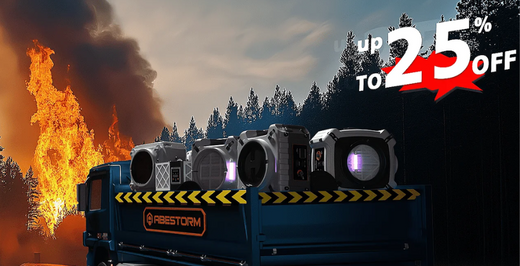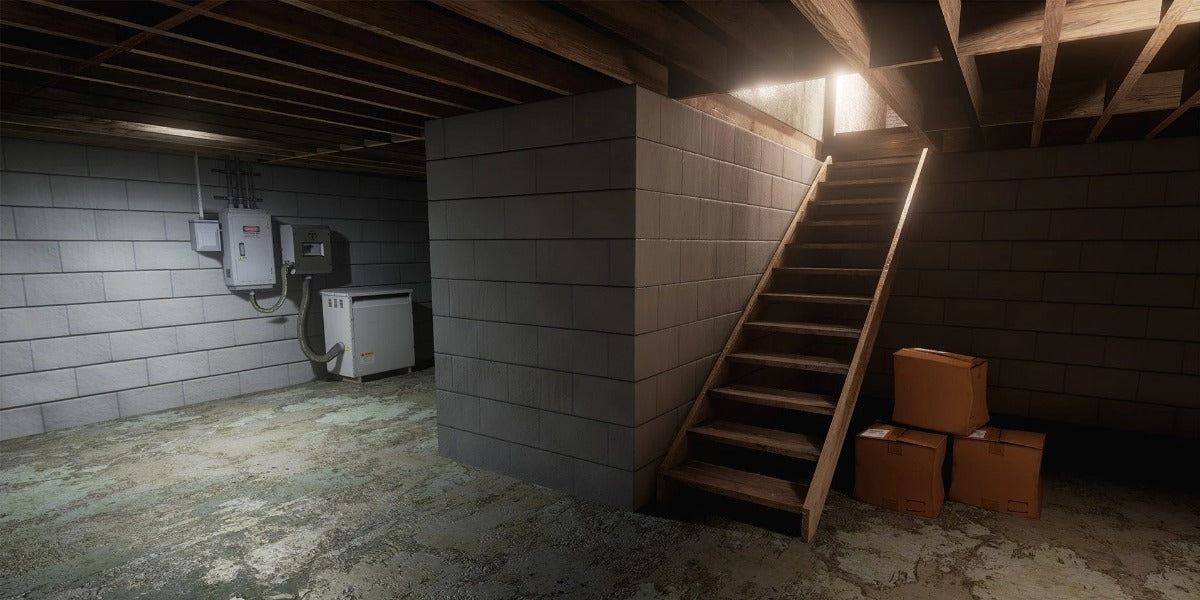Are you wondering why is dehumidifier not draining through hose? You are not alone if your dehumidifier does not drain via the hose; not a surprise then. The humidity can make your basement or crawl space damp and uncomfortable, defeating the very purpose of having a dehumidifier.
No worries; this article is going to assist you in finding out what's wrong and guiding you on how to repair it. We are going to look through the possible reasons for the problem, give you easy solutions, and restore your dehumidifier back to working condition.
Common Reasons for Drainage Issues
When your crawl space dehumidifier isn't draining through the hose, several factors could be causing the problem.
Here are some of the most common reasons:
1. Clogged Hose
One common malfunction of a dehumidifier drain hose not working is because the hose is clogged. Inside a hose, dust, dirt, and mold quickly accumulate and neatly close a passage for water to drain.
2. Improper Hose Connection
Another common problem is an incorrectly connected hose. If the hose is not properly fitted to the dehumidifier, it may leak out or water may fail to drain as it should.
3. Hose Placement Issues
It also depends on the placement of the hose: too high or too low, it can create a siphoning effect or cause the pool in it.
4. Internal Blockages
Internal blockages in the dehumidifier itself may restrict proper draining. Dust, dirt, or mold can accumulate in the interior housing of the unit and lead to a clog in its drainage system.
But how you can troubleshoot these common dehumidifier drainage issues and fix them? Let's discuss this in detail.
Troubleshooting Steps
If your dehumidifier isn't draining through the hose, follow these dehumidifier troubleshooting steps to resolve the issue:
1) Inspect and Clean the Hose
Whenever in doubt, first turn off the dehumidifier before taking the hose off the unit. Inspect the hose for any kind of blockage—for instance, dust, dirt, or mold.
Let some water pass through the hose to clear the block and scrub with a flexible brush to remove hard items thoroughly from the surface. If necessary, be sure to make the hose properly reattached on the dehumidifier side after cleaning it.
2) Check Hose Connections
Ensure the dehumidifier is turned off before checking the hose connections. Inspect both ends of the hose; one must be connected to the dehumidifier, another at the drain end.
Connect the hose ends and tighten the connections rapidly so that they are secure enough to avoid leakages, but not so overly tight that you impair the washers or sensitize later removal of the connections.
3) Proper Hose Placement
Place the hose correctly by positioning it downward to allow gravity to help with the drainage. Next, make sure that the hose lies straight without twisted or pinched thirds that could inhibit water running out.
Also, the hose's level should not be set very hollow or very high, interfering with the drainage effect.
4) Internal Inspection
Turn off and unplug the dehumidifier before inspecting its internal components. Refer to the user manual for help in correctly opening the unit. Check inside the unit for the presence of clogged matter like dust, dirt, or fungal growth, interfering with the functioning drainage system.
Use a soft brush and one piece of cloth to gently clean and brighten visible clogs. Now, reassemble the dehumidifier back and plug it in.
Follow these troubleshooting steps to fix common issues that cause your dehumidifier to not be able to drain by the use of the hose.
Preventative Measures
Besides troubleshooting steps and fixes, there are some additional preventative measures that you can take to avoid common issues with your dehumidifier.
Here are some of them:
· Regular Maintenance
Engage in regular maintenance procedures with the dehumidifier to keep the gadget in top working order. This includes periodic cleaning of the hose and internal parts, and checking for indications of wear. This will prevent forming blockages and allow smooth drainage.
· Use of Filters
The filters in the dehumidifiers can catch dust and debris that would otherwise plug the hose and the other components that the machine has. Regularly clean or replace these filters according to the recommendations of the vents' manufacturer.
· Elevating the Unit
Elevating your dehumidifier can improve drainage and allow gravity to help in the process. Place a dehumidifier on a level and safe elevation that raises the unit slightly in order for no water to accumulate inside.
· Proper Hose Management
Make sure that the hose is of the correct length and is laid without kinks and bends. Check the hose regularly after use for any signs of wearing out or damaging and make replacements when needed. Proper hose management will keep the drainage path clear and unobstructed.
· Humidity Level Monitoring
Maintain the moisture level in your room. You are only going to avoid the strain on the dehumidifier and the chances of difficulty in drainage just if the machine is set at the right or rather suitable level. Ideally, use a hygrometer to watch over the settings.
· Keeping the Area Clean
Keep the place where you have kept the dehumidifier very clean. It may suck in dust and dirt much more easily, which may block the unit altogether. Vacuum and dust around it regularly in order to cut down the amount of debris that may enter into the dehumidifier.
When to Consider Professional Help?
Some common problems with the dehumidifier are quite resolvable through basic troubleshooting and care. But there are times when professional help is needed.
Let's see when to consider professional help and why:
· Persistent Issues
If you have tested all of the above steps and taken preventive measures, yet your dehumidifier is still not properly draining, it is high time you sought some professional expertise. This persistent case could be indicating a more technical challenge from within that needs appropriate diagnosis and repair.
· Electrical Problems
If your unit does not power on, operates irregularly, or has lights that flash, these are all indications that it may have an electrical issue and should be serviced by a professional. Trying to service electrical problems on one's own represents a danger and may void the warranty on one's dehumidifier.
· Leaks or Water Damage
If you find a leak or a waterlogged area around the dehumidifier, seek professional help immediately. Water-induced damage causes growth in properties like mold and other serious hazards that are pertinent to your health and property.
· Component Failures
In case the internal components, such as the fan, compressor, or pump, are out of order, the professional technician can investigate by checking and replacing the damaged parts with appropriate alternatives. Attempting to fix these components on your own can be difficult and may cause further damage to the unit.
· Unusual Odors or Mold Growth
Unusual odors or visible mold growth inside your dehumidifier both signify a significant problem that will require professional cleaning and servicing. Mold usually grows very fast and, therefore, poses health hazards on its own; hence professional help is necessary in the case of this anomaly.
Conclusion
So now you know why is dehumidifier not draining through hose. All you have to do is follow the steps given above and you will end up getting rid of leakage in your dehumidifier.
If there are further problems, or you do notice electrical problems, leakage, or mold, it's always best to consult a professional. With these tips, you can keep your dehumidifier working efficiently and your space dry and comfortable.









Shop For Dehumidifier